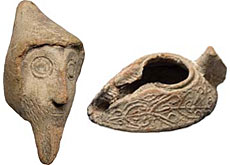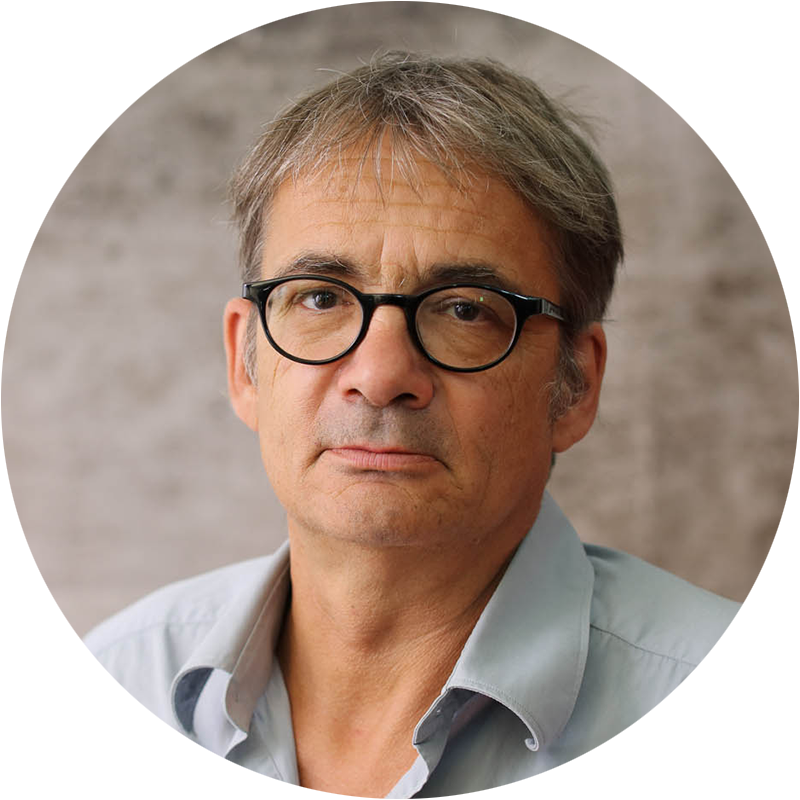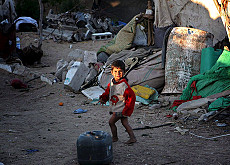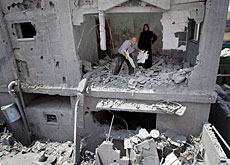Gaza exhibition shows region’s turbulent past

A Geneva exhibition about the archaeological riches of the Gaza Strip shows the tangled history of the region, a Middle East expert tells swissinfo.
Pascal de Crousaz says both Palestinians and Israelis use their history for nationalistic purposes.
The exhibition, entitled “Gaza at the crossroad of civilisations”, was opened by Swiss President Micheline Calmy-Rey and Palestinian leader Mahmoud Abbas at Geneva’s Art and History Museum on Thursday.
Geneva is also involved in a project supported by Unesco, the United Nations’ cultural body, to build a major archaeological museum in Gaza. The Swiss city is to provide technical and scientific assistance.
swissinfo: Are the Geneva exhibition and the Gaza museum project the first of their kind for the Palestinians?
Pascal de Crousaz: Ever since the Palestinian Authority was created in 1994, people have been trying to promote an archaeology that can properly be called Palestinian. But as far as I know, there haven’t yet been any large international exhibitions on Gaza.
Abbas’ presence shows there is a political dimension to this cultural event. The Palestinians are currently cut off from the world. The exhibition is a way of seeking support from the outside.
This is not just for the archaeological museum in Gaza, but also for Palestinian aspirations in Gaza and the West Bank.
swissinfo: Have the Israelis shown the way through their archaeological research which served as a historical basis for Israel?
P.d.C.: For the Israelis it was all about providing legitimacy for their policy – the taking of land by Jewish settlers against the wishes of most of the local population.
The aim was to show the exclusive historical links between the Jewish people and Palestinian land. Archaeology was mobilised to show that Palestine was originally Jewish, that it was not Jewish in a certain period and that those who populated it during this time were foreigners on this soil.
Archaeology was meant to justify this debate by excavating every synagogue or ancient Jewish tomb as proof of land ownership, particularly in the Golan Heights and the West Bank.
There was a kind of silence over Palestine’s non-Jewish history, which is nevertheless a lot larger in terms of number of objects and goes much further back in time.
swissinfo: How have the Palestinians reacted to this?
P.d.C.: Arabs and Palestinians in particular had to produce a counter-argument. A Lebanese archaeologist in the 1980s maintained that the Promised Land mentioned in Biblical texts was north of the present Saudi Arabia.
Another radical position maintained that if prior presence meant privileged rights, Palestinians would benefit because they were the descendents of the Philistines, who were in Palestine before the Jews.
In the Geneva exhibition the political line – if it is conscious – is a lot less controversial. It shows the non-Jewish heritage of a Palestine that has been Philistine, Persian, Greek, Roman, Byzantine, Arab, Mamluk [from the Sultanate of Egypt] and Ottoman. It is a region that is open to the world, a receiver of great civilisations.
That is relatively easy for Gaza because there are practically no traces of Jewish presence in antiquity. It would be more complicated in the West Bank where it is difficult to ignore the many traces of Jewish presence.
swissinfo: By showing the continuous population mix, are the Palestinians being less nationalistic than the Israelis?
P.d.C.: This is certainly the case for Mahmoud Abbas, but he is not alone. Some fundamentalists deny the importance of non-Muslim peoples in this region and consider that Palestine is a land that should be re-conquered and made Muslim again.
Among non-fundamentalist Palestinians you still have nationalists who deny any important position or presence of Jews in Palestine’s history.
swissinfo, based on a French interview by Frédéric Burnand in Geneva
The “Gaza at the crossroad of civilisations” exhibition is open to the public from April 27 to October 7, 2007 at Geneva’s Art and History museum.
It is accompanied by a series of events giving a picture of life in modern Gaza, such as a film festival, exhibitions of artists, concerts, conference, and cuisine.

In compliance with the JTI standards
More: SWI swissinfo.ch certified by the Journalism Trust Initiative



You can find an overview of ongoing debates with our journalists here. Please join us!
If you want to start a conversation about a topic raised in this article or want to report factual errors, email us at english@swissinfo.ch.